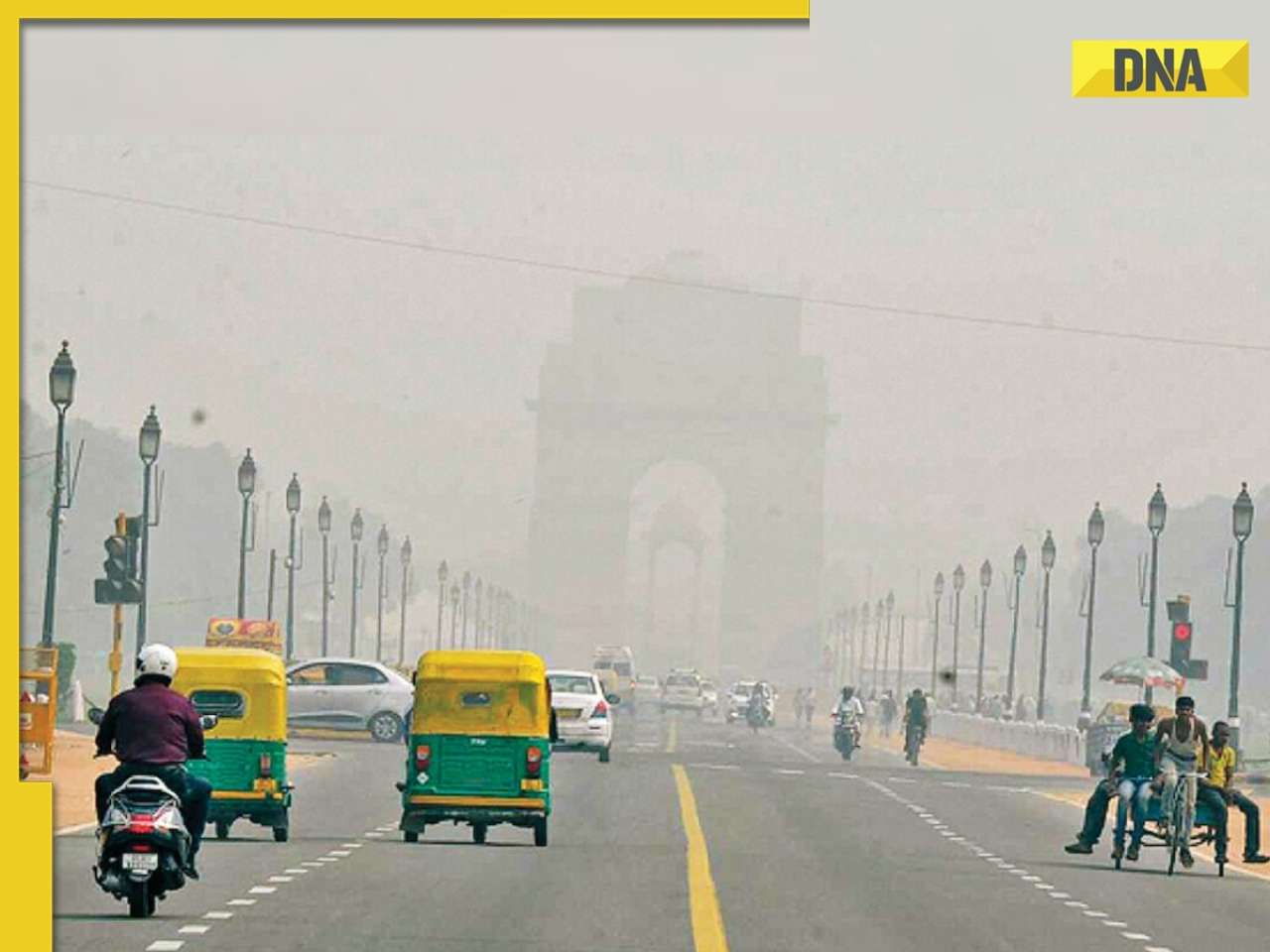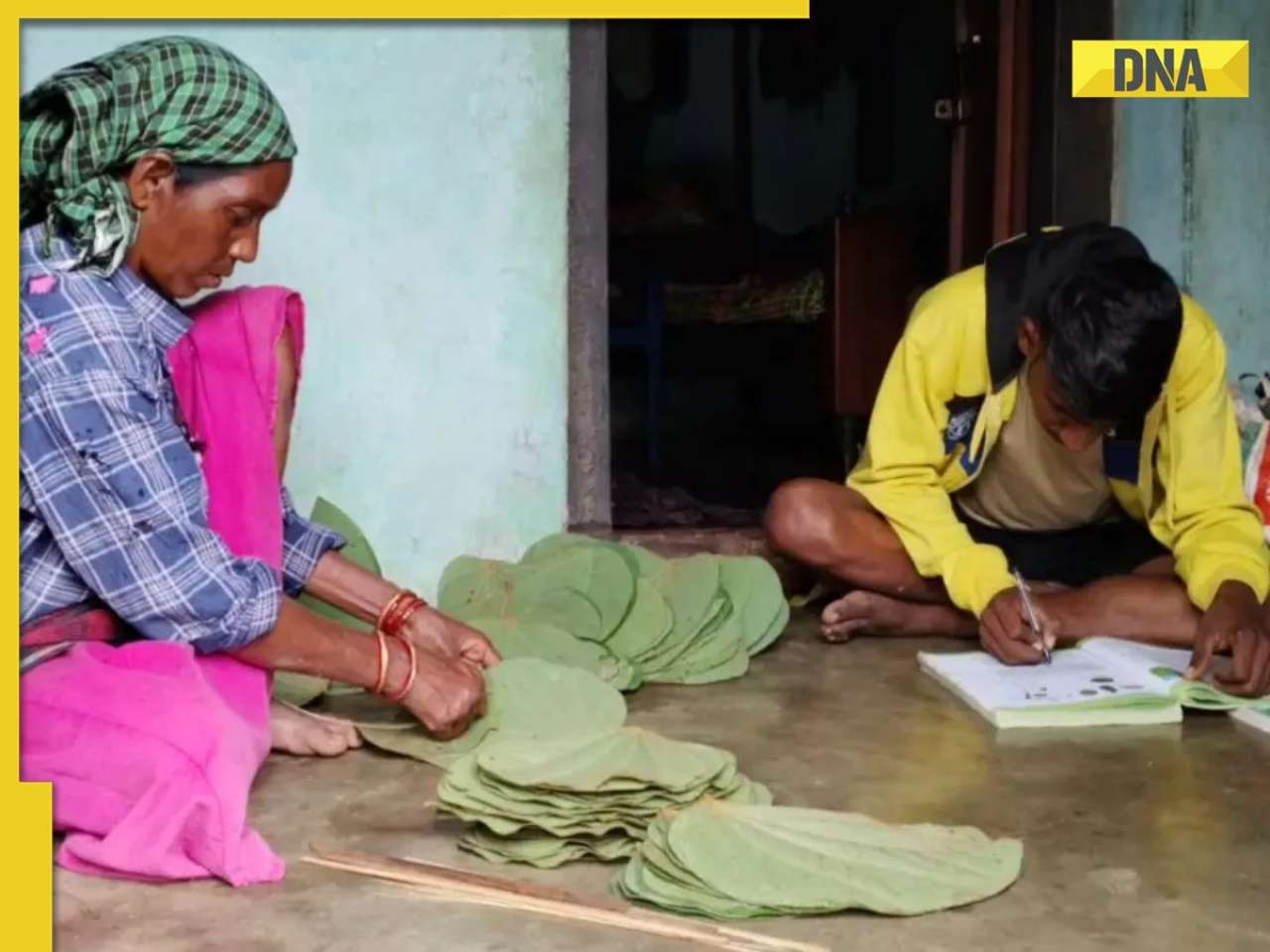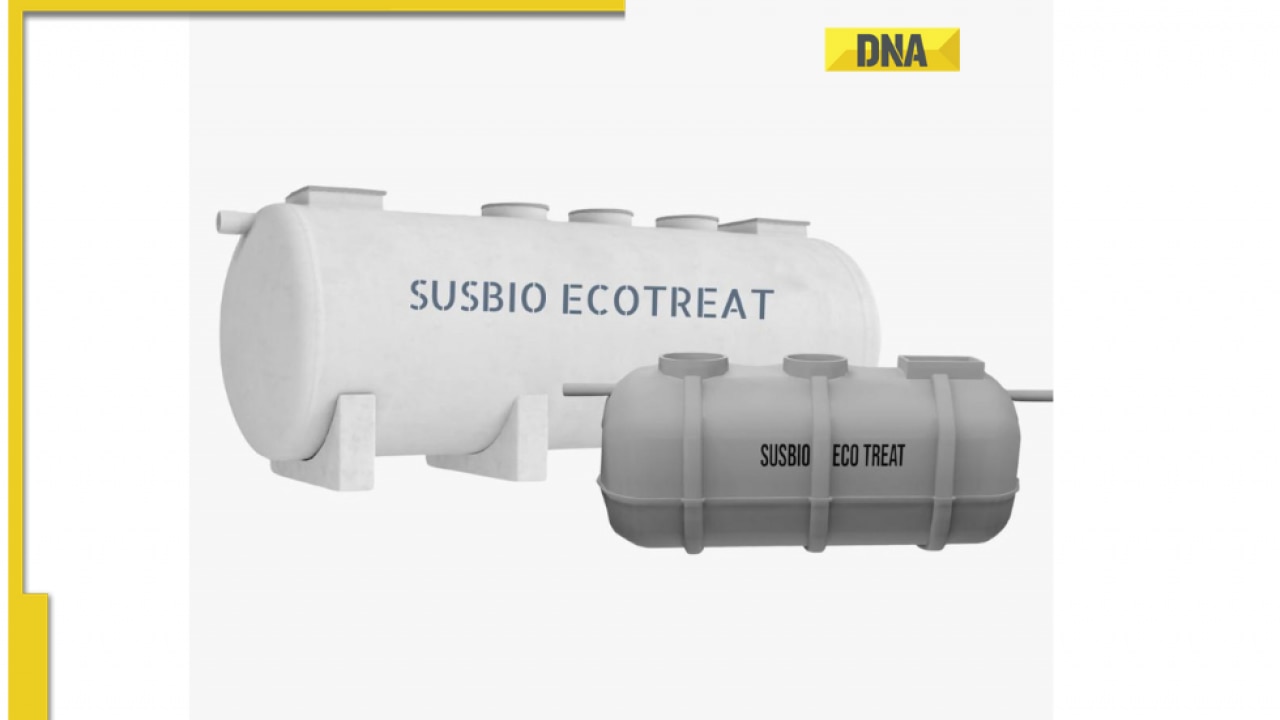The architectural marvel was in bad shape due to lack of protection and vandalism
For the first time in the history, archeologists and conservationists have been able to restore a 393-year-old Mughal era hammam (royal bath used as spa) to its pristine glory in the famed Shalimar garden here.
An architectural marvel, the royal hammam built by Emperor Jahangir in 1620 in the Shalimar garden was lying in ruins before the Indian National Trust for Art and Cultural Heritage (INTACH), Jammu and Kashmir chapter, took-up the restoration work a few years ago.
Estimated to have cost Rs70 lakh, the restoration work was completed in three years by INTACH in collaboration with J&K floriculture department. Special care was taken to ensure that architecture significance of the structure is not disturbed.
The Shalimar hammam is part of the architectural ensemble which includes the Diwan-i-Aam, Diwan-i-Khas, and other buildings. The hammam is a U-shaped structure accessed from a large recessed opening which is preceded by a portico.
The entrance leads to a central chamber (hammam) and two side chambers (ante-rooms). Most of the chambers are lit by skylights. The rooms have flat domed ceilings. The hammam consists of features like the bathing pool or hau, toilet and change room (jamwar khana).
“Shalimar hammam was a royal bath used as spa. More so it was leisure place for the Mughals. However it was suffering from lack of protection, vandalism and excessive vegetative growth. There were piles of debris in and around the structure. The hamaam was used as unofficial public convenience (by people),” Saleem Beg, head of INTACH, Jammu and Kashmir Chapter told dna.
Enter the conservation plan, the experts used careful archaeological exploration to reveal the original building fabric and associated functions which lay hidden under a layer of garbage and debris.
“As the building had greatly suffered due to decay and erosion of masonry surfaces on the external facade, it was decided to undertake lime pointing of the exposed surfaces to prevent decay etc. Traces of original lime plaster on the internal as well as external wall surfaces have been retained. Similarly various vents within the building used for the purpose of heating have been cleaned and repaired, thus serving as a valuable insight into the way these hammams functioned,” said Beg.
After three years of restoration work the Shalimar royal hammam has been thrown open for public.
“Anybody can go and see this architectural marvel. Though hammam cannot be used, it generates enthusiasm among the public about our history,” said Sunil Misiri, director, J&K floriculture department.
Misiri hoped that the restoration of this hammam will go a long way to boost the tourism sector in the Kashmir Valley. “It will definitely augur well for the tourism sector of Kashmir,” he said.
![submenu-img]() Who is Siddique? Malayalam actor missing after Kerala High Court denies him anticipatory bail in rape case
Who is Siddique? Malayalam actor missing after Kerala High Court denies him anticipatory bail in rape case![submenu-img]() Delhi's air quality turns 'poor' as monsoon ends, AQI reaches...
Delhi's air quality turns 'poor' as monsoon ends, AQI reaches...![submenu-img]() Who is Mohsin Akhtar Mir? Urmila Matondkar's husband from whom she has filed for divorce, Kashmiri model acted in...
Who is Mohsin Akhtar Mir? Urmila Matondkar's husband from whom she has filed for divorce, Kashmiri model acted in...![submenu-img]() Bigg Boss 17 winner, comedian Munawar Faruqui buys plush home in Mumbai, it's price will leave you shocked
Bigg Boss 17 winner, comedian Munawar Faruqui buys plush home in Mumbai, it's price will leave you shocked![submenu-img]() Badlapur sexual assault case: Accused Akshay Shinde's father moves HC, seeks...
Badlapur sexual assault case: Accused Akshay Shinde's father moves HC, seeks...![submenu-img]() J-K Vidhan Sabha Chunav LIVE: जम्मू-कश्मीर में बीते 11 बजे तक हुआ 24.1 मतदान, वोटिंग को लेकर लोगों में उत्साह
J-K Vidhan Sabha Chunav LIVE: जम्मू-कश्मीर में बीते 11 बजे तक हुआ 24.1 मतदान, वोटिंग को लेकर लोगों में उत्साह ![submenu-img]() UP News: 'सर मैं ऑनलाइन गेमिंग में 15 लाख हार गया,' सिपाही ने SP को सुनाया अपना दर्द, बताई हैरान करने वाली बातें
UP News: 'सर मैं ऑनलाइन गेमिंग में 15 लाख हार गया,' सिपाही ने SP को सुनाया अपना दर्द, बताई हैरान करने वाली बातें![submenu-img]() बांग्लादेश की नई सरकार को US का समर्थन, क्या है यूनुस और बाइडेन की मुलाकात के पीछे का मकसद?
बांग्लादेश की नई सरकार को US का समर्थन, क्या है यूनुस और बाइडेन की मुलाकात के पीछे का मकसद?![submenu-img]() सेहत के लिए वरदान बन सकता है लाल-लाल टमाटर, जानें Tomato Juice पीने के 5 फायदे
सेहत के लिए वरदान बन सकता है लाल-लाल टमाटर, जानें Tomato Juice पीने के 5 फायदे![submenu-img]() जम्मू-कश्मीर में दूसरे चरण के लिए मतदान आज, 26 सीटों पर वोटिंग, मैदान होंगे ये 5 बडे़ चेहरे
जम्मू-कश्मीर में दूसरे चरण के लिए मतदान आज, 26 सीटों पर वोटिंग, मैदान होंगे ये 5 बडे़ चेहरे ![submenu-img]() Tata launches Nexon iCNG, check price, mileage, other features
Tata launches Nexon iCNG, check price, mileage, other features![submenu-img]() This Indian car brand set to acquire 50% stake in Skoda Auto Volkswagen India, deal will cost Rs…
This Indian car brand set to acquire 50% stake in Skoda Auto Volkswagen India, deal will cost Rs…![submenu-img]() Ford to return to India after 2 years with reopening of....
Ford to return to India after 2 years with reopening of....![submenu-img]() Maruti Suzuki launches new Swift CNG, check price, mileage, other features
Maruti Suzuki launches new Swift CNG, check price, mileage, other features![submenu-img]() ‘30 LPA, 3BHK, no in-laws’: Woman earning Rs 1.32 lakh salary lists demands for future husband, netizens say...
‘30 LPA, 3BHK, no in-laws’: Woman earning Rs 1.32 lakh salary lists demands for future husband, netizens say...![submenu-img]() Meet man who worked as auto-driver, slept with beggars, later cracked UPSC exam, currently he is...
Meet man who worked as auto-driver, slept with beggars, later cracked UPSC exam, currently he is...![submenu-img]() Meet Indian genius, worked at IIT, wrote over 50 books, won all possible awards but missed out on Nobel due to...
Meet Indian genius, worked at IIT, wrote over 50 books, won all possible awards but missed out on Nobel due to...![submenu-img]() Meet tribal student, who had no books, trekked 3 km daily for internet, cracked NEET in first attempt, he is from...
Meet tribal student, who had no books, trekked 3 km daily for internet, cracked NEET in first attempt, he is from...![submenu-img]() Meet woman, IIT graduate, who left bank job to become state topper in UPSC, now working as...
Meet woman, IIT graduate, who left bank job to become state topper in UPSC, now working as...![submenu-img]() Meet IPS officer, who has resigned after 10 yrs of service to work in...
Meet IPS officer, who has resigned after 10 yrs of service to work in...![submenu-img]() Congress President Kharge Slams & Opposes 'One Nation, One Election' Proposal, Calls It Impractical
Congress President Kharge Slams & Opposes 'One Nation, One Election' Proposal, Calls It Impractical![submenu-img]() Why 'One Nation One Election' Is important? Ashwini Vaishnaw Explains After It Gets Cabinet Approval
Why 'One Nation One Election' Is important? Ashwini Vaishnaw Explains After It Gets Cabinet Approval![submenu-img]() Jammu Kashmir Assembly Election 2024 Phase 1 Highlights: What Happened In First phase In J&K Polls?
Jammu Kashmir Assembly Election 2024 Phase 1 Highlights: What Happened In First phase In J&K Polls?![submenu-img]() One Nation One Election: Centre Clears Proposal, Bill To Be Introduced In Winter Session | Modi 3.0
One Nation One Election: Centre Clears Proposal, Bill To Be Introduced In Winter Session | Modi 3.0![submenu-img]() Haryana Elections 2024: Is BJP Set To Lose In Haryana? Anti-Incumbency And Other Factors Analysed
Haryana Elections 2024: Is BJP Set To Lose In Haryana? Anti-Incumbency And Other Factors Analysed![submenu-img]() Meet woman, closely related to Ratan Tata, heads 130-year-old company with market cap of Rs 13273 crore, she is...
Meet woman, closely related to Ratan Tata, heads 130-year-old company with market cap of Rs 13273 crore, she is...![submenu-img]() Sebi asks individual investors to use only UPI for up to Rs 5 lakh to...
Sebi asks individual investors to use only UPI for up to Rs 5 lakh to...![submenu-img]() Mukesh Ambani's Reliance consumer products to challenge rivals with aggressive pricing strategy ahead of festivals
Mukesh Ambani's Reliance consumer products to challenge rivals with aggressive pricing strategy ahead of festivals![submenu-img]() Meet woman with Rs 39322 crore net worth, who once led Rs 59262 crore company, she is India's richest...
Meet woman with Rs 39322 crore net worth, who once led Rs 59262 crore company, she is India's richest...![submenu-img]() Driving Excellence in Construction Management: The Journey of Rinkesh Gajera
Driving Excellence in Construction Management: The Journey of Rinkesh Gajera![submenu-img]() Aabha Paul sets the internet on fire with her sultry looks, see pics
Aabha Paul sets the internet on fire with her sultry looks, see pics![submenu-img]() This bird flies for months covering 12000 kms without landing
This bird flies for months covering 12000 kms without landing![submenu-img]() Jai Anmol Ambani: Luxurious cars owned by Anil Ambani’s son; check pics here
Jai Anmol Ambani: Luxurious cars owned by Anil Ambani’s son; check pics here![submenu-img]() From Shah Rukh promising to take care of son to Kumar Gaurav's vow to only marry her: Vijayta Pandit's bold statements
From Shah Rukh promising to take care of son to Kumar Gaurav's vow to only marry her: Vijayta Pandit's bold statements![submenu-img]() Ajay Devgn's biggest flop film was made in Rs 100 crore, couldn't recover 10% of budget; it's not Himmatwala, Maidaan
Ajay Devgn's biggest flop film was made in Rs 100 crore, couldn't recover 10% of budget; it's not Himmatwala, Maidaan![submenu-img]() Badlapur sexual assault case: Accused Akshay Shinde's father moves HC, seeks...
Badlapur sexual assault case: Accused Akshay Shinde's father moves HC, seeks...![submenu-img]() Mumbai Metro Aqua Line 3: First phase of Mumbai's underground metro likely to be inaugurated in...; check speed, fare
Mumbai Metro Aqua Line 3: First phase of Mumbai's underground metro likely to be inaugurated in...; check speed, fare![submenu-img]() New airline from Uttar Pradesh gets govt approval, set to compete with IndiGo, Air India
New airline from Uttar Pradesh gets govt approval, set to compete with IndiGo, Air India![submenu-img]() Transforming Contingent Workforce Management with Cutting-Edge Program Strategies
Transforming Contingent Workforce Management with Cutting-Edge Program Strategies![submenu-img]() Sustainable Solutions: How SUSBIO ECOTREAT Is Transforming Sewage Treatment In India
Sustainable Solutions: How SUSBIO ECOTREAT Is Transforming Sewage Treatment In India













































)





)
)
)
)
)
)